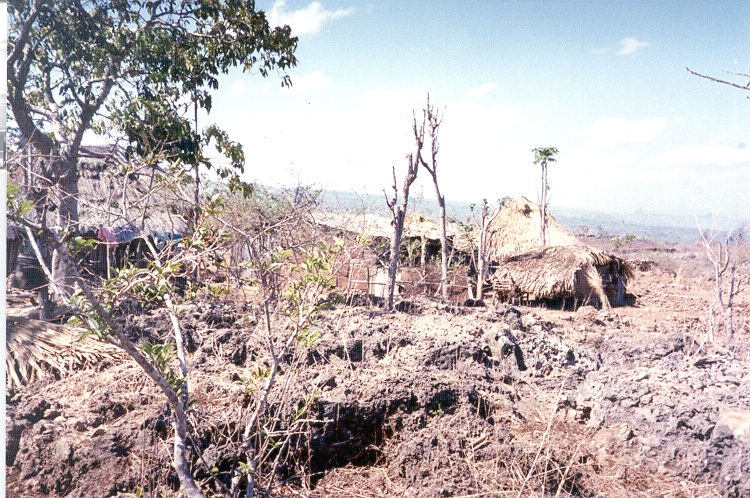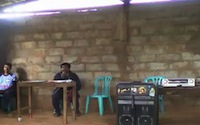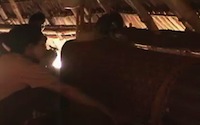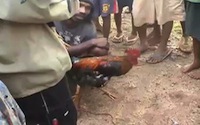The Waima’a people are hemmed in by two much larger populations, namely the Makasae to the east, and the Galoli to the west. Speakers live in small hamlets which have populations of 50-100 people. As a relatively small cultural group, the Waima’a people have had a long history of interaction with speakers of other languages in the region. They thus exemplify in a highly typical way a striking feature of the East Timor area, i.e. the extent to which it may be viewed as a linguistic area (Sprachbund) as well as a cultural area (Kulturbund). It is clear that there has been extensive long-term contact and diffusion across ethnic and linguistic groups. In this respect East Timor also falls within larger contact/diffusion areas (Timor, as well as within the wider geographical area (Lesser Sunda/Southern Maluku area)). It is extremely useful, therefore to look at the wider picture in order to understand cultural and linguistic practices amongst the Waima’a. Accordingly, the background material in this documentation makes frequent reference to other ethnic and linguistic groups and groupings in the area.
As widely discussed in the anthropological literature (see Fox 1980 and Loch 2007 for examples and references), East Timorese societies (and many other societies in Eastern Indonesia) focus on the “house” (Waima’a umo) as the core social unit in terms of which most social interaction is organized and which is also the major determinant of the social and personal identity of the individual. Names of umo-kai (lineages) essentially designate social units which provide the basic units for both the geographical and socio-political structure of the village. Their political function is evident from the fact that for major decisions (such as the attempt to become a village of its own in 2003) the opinion of representatives from each umo-kai are heard (see sukufoun recordings and materials). Since lineages often live together in a small hamlet (baha-lale) which centers on their uma-ba’i (“totem house”, lit. bitter or secret house) or umo-baha (“ancestral house”), the names for umo-kai are at the same time names for the place where the hamlet is.

Traditional houses in Caisido
At the time the project started, East Timor had just declared independence in May 2002. Formerly a Portuguese colony, East Timor was invaded by Indonesian forces in 1975. Most of the East Timorese people never accepted Indonesian rule, and 25 years of occupation also
meant 25 years of resistance. When the Indonesian government offered the East Timorese a choice between special autonomy within Indonesia, or independence at a United Nations supervised referendum in 1999, the East Timorese opted overwhelmingly for independence. When Indonesian forces withdrew from the territory, the militias which they had sponsored wreaked devastation, and the fledegling country’s infrastructure was largely destroyed. A United Nations administration was set up in order to oversee the transition to independence.
For more info on these and related topics see:
Internet sources on East Timor
The following links represent just a tiny proportion of the information that is available on the web for East Timor.
- http://www.un.org/en/peacekeeping/missions/past/etimor/etimor.htm: the United Nations’ official site on its East Timor activities.
- www.etan.org: the East Timor Action Network site. This organisation, based in the United States, was one of the most prominent international organisations in the fight for East Timorese independence.
- www.timoraid.org: One of the major aid organisation sites dedicated to East Timor.
References
Fox, James J. (1980) The Flow of Life: Essays on Eastern Indonesia, Cambridge, Mass.: Harvard University Press.
Loch, Alexander (2007) Haus, Handy & Halleluja. Psychosoziale Rekonstruktion in Osttimor. Eine ethnopsychologische Studie zur postkonfliktuösen Dynamik im Spannungsfeld von Identität, Trauma, Kultur und Entwicklung. Frankfurt: IKO-Verlag.






